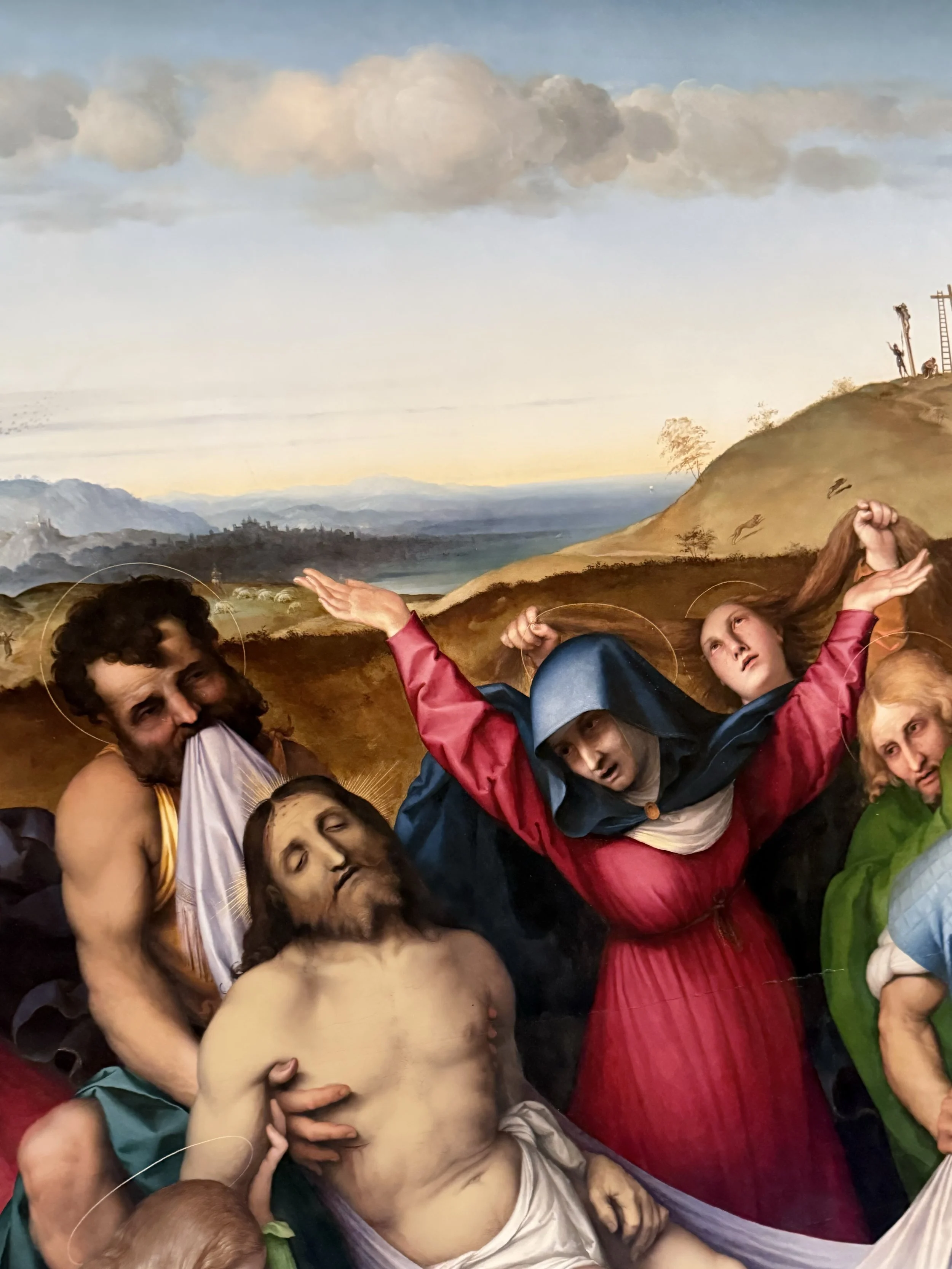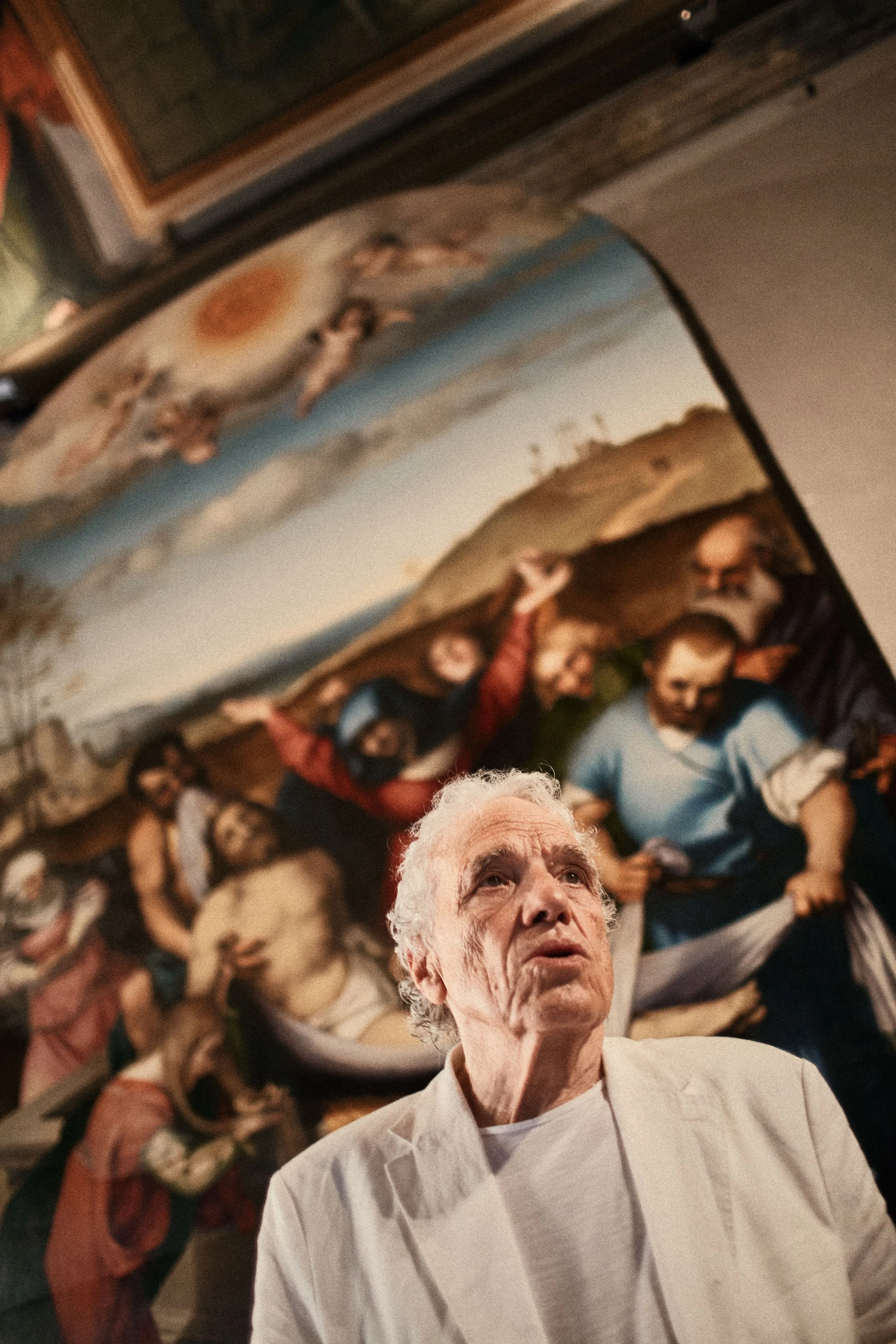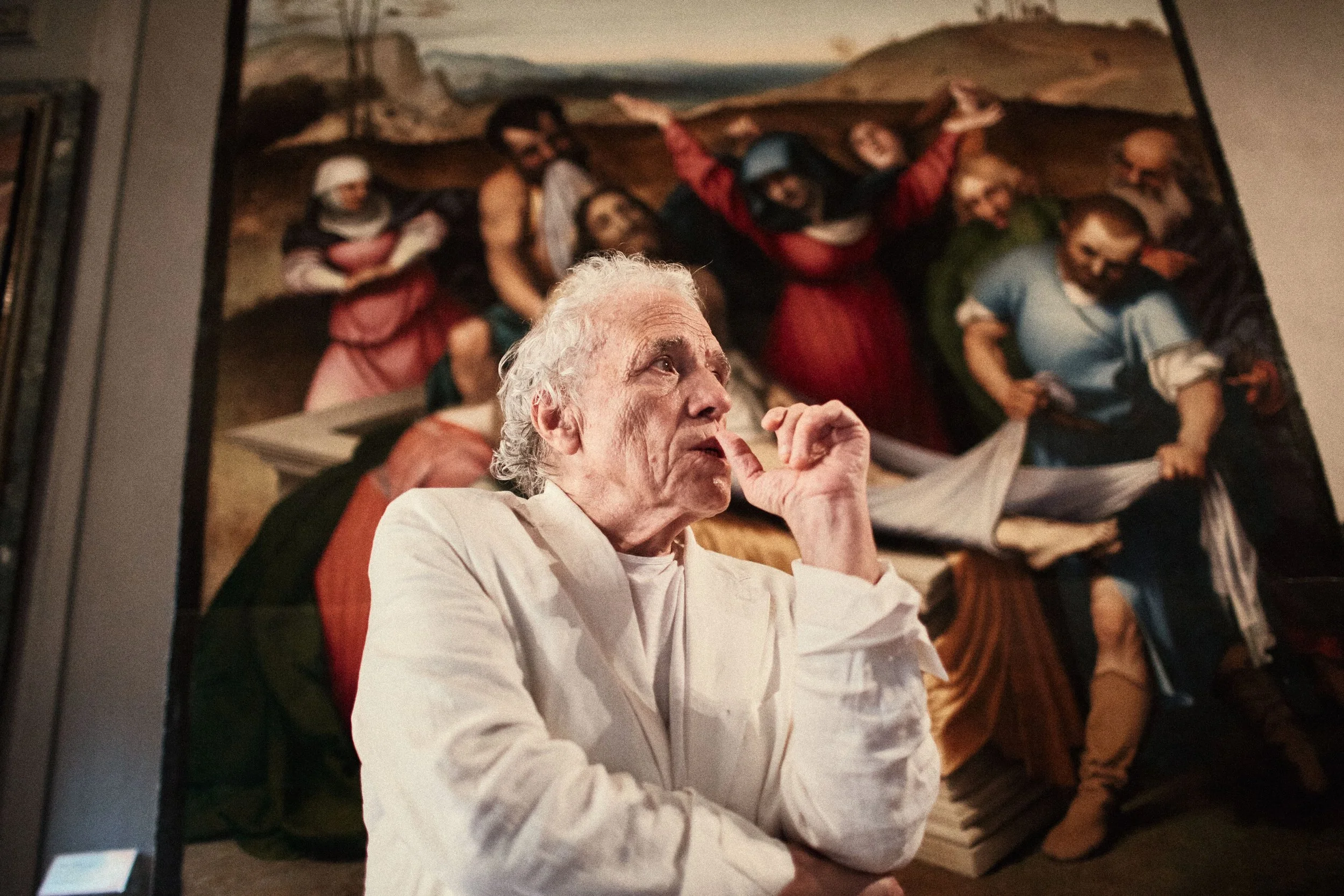Abel Ferrara reads “Divine Echoes” by Gabriele Tinti
Abel Ferrara reads “Divine Echoes” by Gabriele Tinti
A tribute to Lorenzo Lotto
On July 1st, the Civic Art Gallery of Jesi hosted director and actor Abel Ferrara for a reading of poems by Gabriele Tinti, inspired by Lorenzo Lotto’s Deposition. The poet took on the challenges posed by Lotto’s imagination, composing a series of fragments and epigrams—like open wounds, bleedings: attempts to step outside oneself and draw nearer to the divine.
Gabriele Tinti: Lorenzo Lotto’s Deposition—commissioned by the Confraternity of the Buon Gesù of Jesi and now housed in the city’s Pinacoteca—is of extraordinary expressive power: dramatic, pathetic, “violently passionate” (Bernard Berenson). It depicts the traditional figures of the Lamentation: the Virgin Mary, Mary Magdalene, Nicodemus—here holding the nails of the cross—and Saint John. Christ’s body is sculptural and heavy, resting on a luminous shroud that two bearers struggle to drag toward the sarcophagus.
The Compianto—to mourn together, to mourn with—indicated both in poetry and painting the restitution of grief for the death of a loved one or of Christ himself. In many cases, such works took on a theatrical quality, evokingsacred representations and rituals, and carrying a performative disposition. A disposition intensified by the “unsettled and unsettling” art of Lorenzo Lotto, which—as art historian Pietro Zampetti wrote in 1969—“provokes a conversation that remains open, even today, between the artist and ourselves. His painting (...) comes toward us unbidden, disturbs our peace, poses questions that are alive and pressing.”
This series of poems includes Latin and Greek inserts taken from ancient funerary inscriptions, which are my primary source of inspiration. After all, my poetry is nothing but an attempt at prayer. It mostly takes its cue from Greek and Latin epigrams, using the elegiac couplet—the meter of elegy, of epitaphs—the structure chosen to express laments, mourning for the human condition, and personal despair.
It is poetry that seeks to answer that “arise! arise!” to which no dead man could ever respond—except for Christ, the mystery of faith. And yet, from the disorientation of silence, from the timor mortis, from the irreparable absence, art and literature were born—true poetry was born. From this came the threnoi, the funeral chants, the planctus, the lamentations, and the ictus of inscriptions on stone: all languages through which ancient peoples, everywhere, entrusted their resistance to death, their will to preserve human life through time.
Absence became presence through the communication the epitaph sought to establish with the living. The voice could be that of the deceased, the commissioner of the tomb, or the stone itself, offering a monologue or initiating a dialogue. “I call to you. What’s strange about that?” reads a stelefrom first-century Athens. Back then, speaking to one's ancestors was not such a strange thing. And that has been our attempt—with Lotto, and with themes once essential, now forgotten.
Abel is my ideal reader. By now, we’ve established such a close rapport that we understand each other instantly. No need for lengthy preparation—everything flows spontaneously, naturally.
Abel Ferrara: “Looking at this Deposition, I start thinking about Lorenzo Lotto’s time, how these great artists had only a few themes to explore and very specific patrons. I wonder: what could they have truly done, if they had been free? What would they have painted, if they didn’t have to answer to anyone?”
“And then I ask myself: whom did he model Christ or Mary Magdalene on? Who knows—maybe Nicodemus has the face of a friend. The mystery carried by every image—about its maker, what it evokes, what it leaves unsaid—is the mystery of art itself.”







